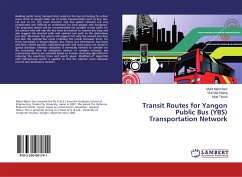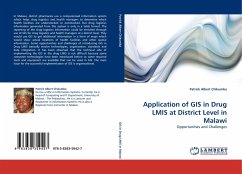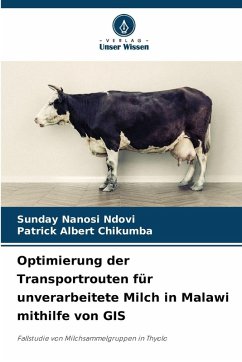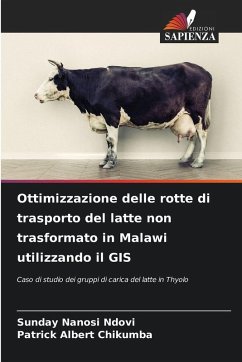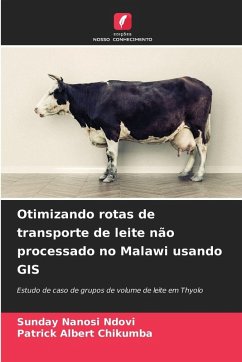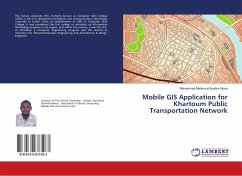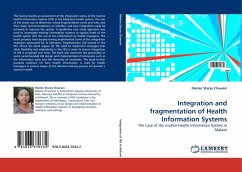
Optmising Unprocessed Milk Transportation Routes in Malawi Using GIS
Versandkostenfrei!
Versandfertig in 6-10 Tagen
40,99 €
inkl. MwSt.

PAYBACK Punkte
20 °P sammeln!
In Malawi, smallholder dairy farmers transport unprocessed milk to sell at Milk Bulking Groups (MBGs). MBGs store and chill the milk while awaiting collection by processors. The farmer deliver milk using various modes of transport such as foot, bicycle and motorcycle. As a perishable food, milk requires timely transportation to avoid deterioration. In other instances, some farmers bypass their nearest MBGs for facilities located further. Untimely delivery worsens quality and results in rejection at MBG. Subsequently, famers lose revenue losses. Therefore, the objective of this study was to opt...
In Malawi, smallholder dairy farmers transport unprocessed milk to sell at Milk Bulking Groups (MBGs). MBGs store and chill the milk while awaiting collection by processors. The farmer deliver milk using various modes of transport such as foot, bicycle and motorcycle. As a perishable food, milk requires timely transportation to avoid deterioration. In other instances, some farmers bypass their nearest MBGs for facilities located further. Untimely delivery worsens quality and results in rejection at MBG. Subsequently, famers lose revenue losses. Therefore, the objective of this study was to optimize routes when transporting milk by selecting the shortest route using time as cost attribute in GIS. A spatially organized transport system impedes milk deterioration while promoting profitability to farmers. A transport system was modeled using Route Analysis and Closest Facility network extensions. The final output was to find quickest routes and identify nearest facilities from incidents.



